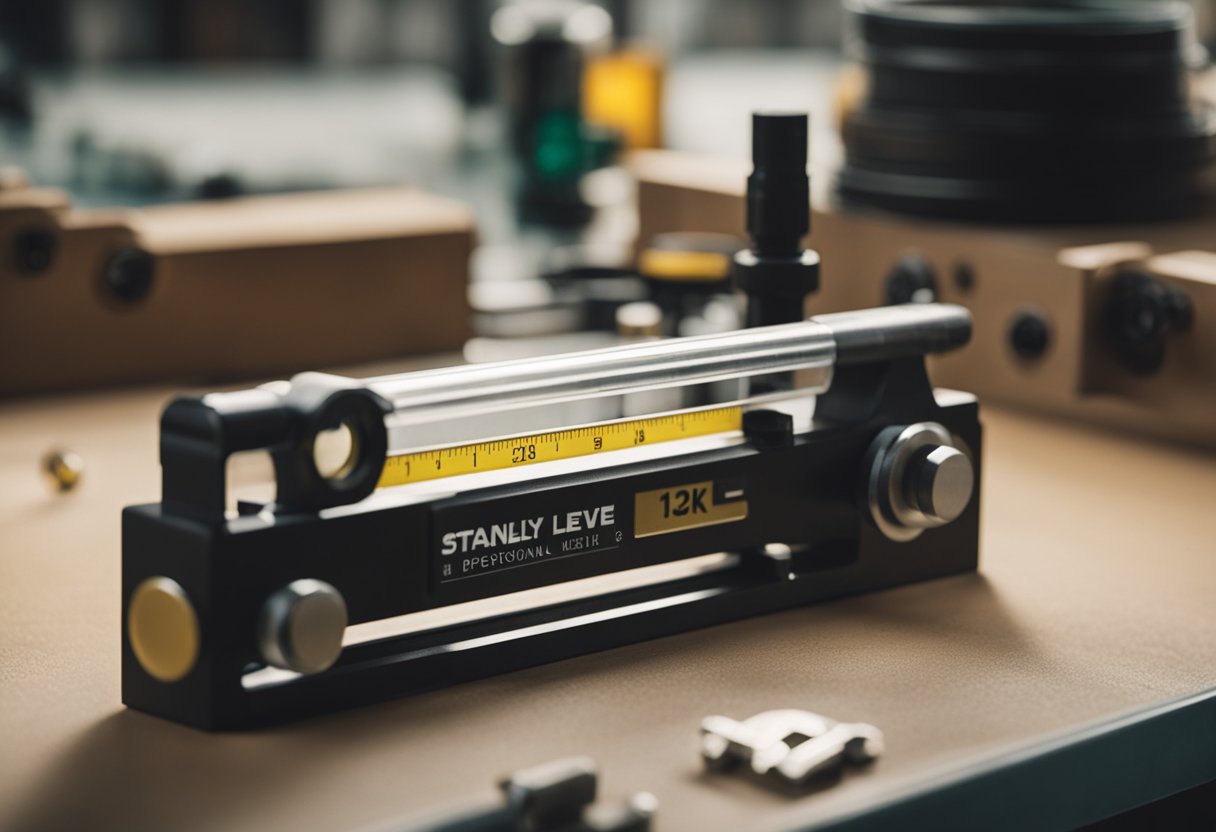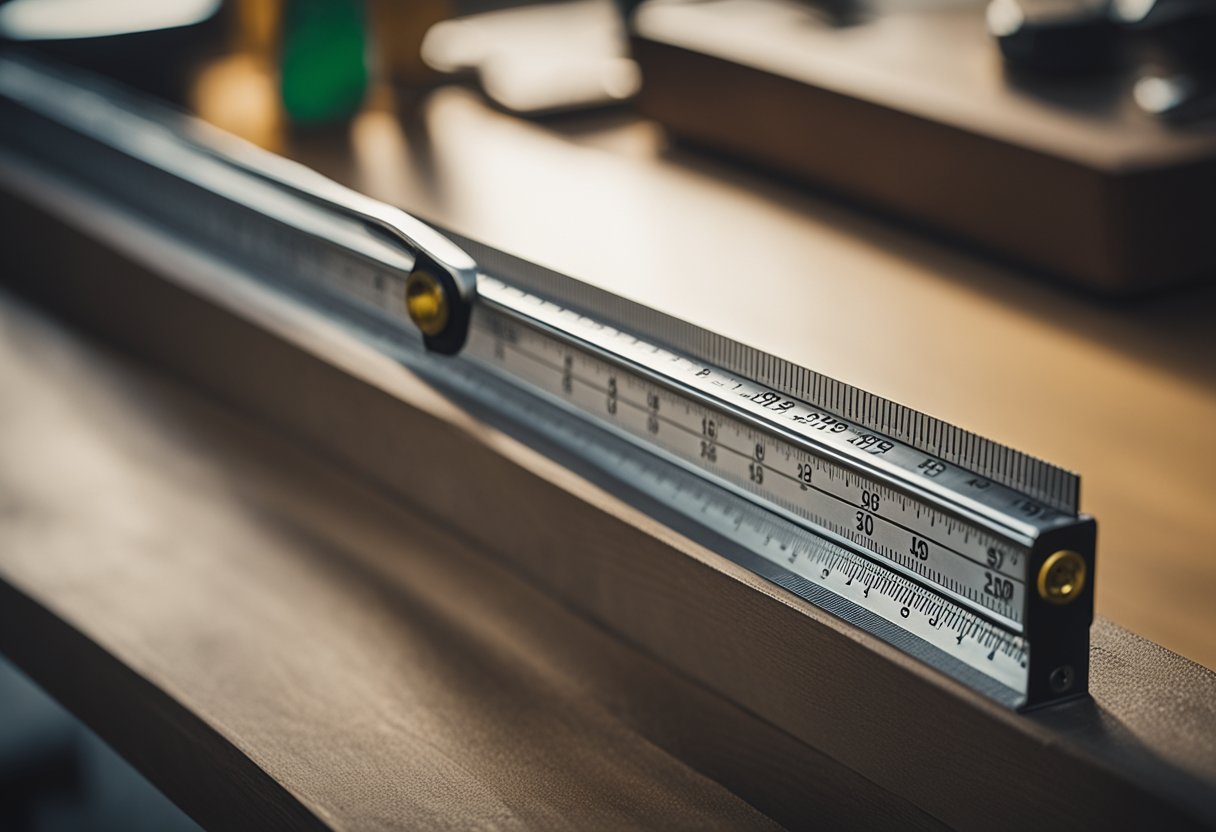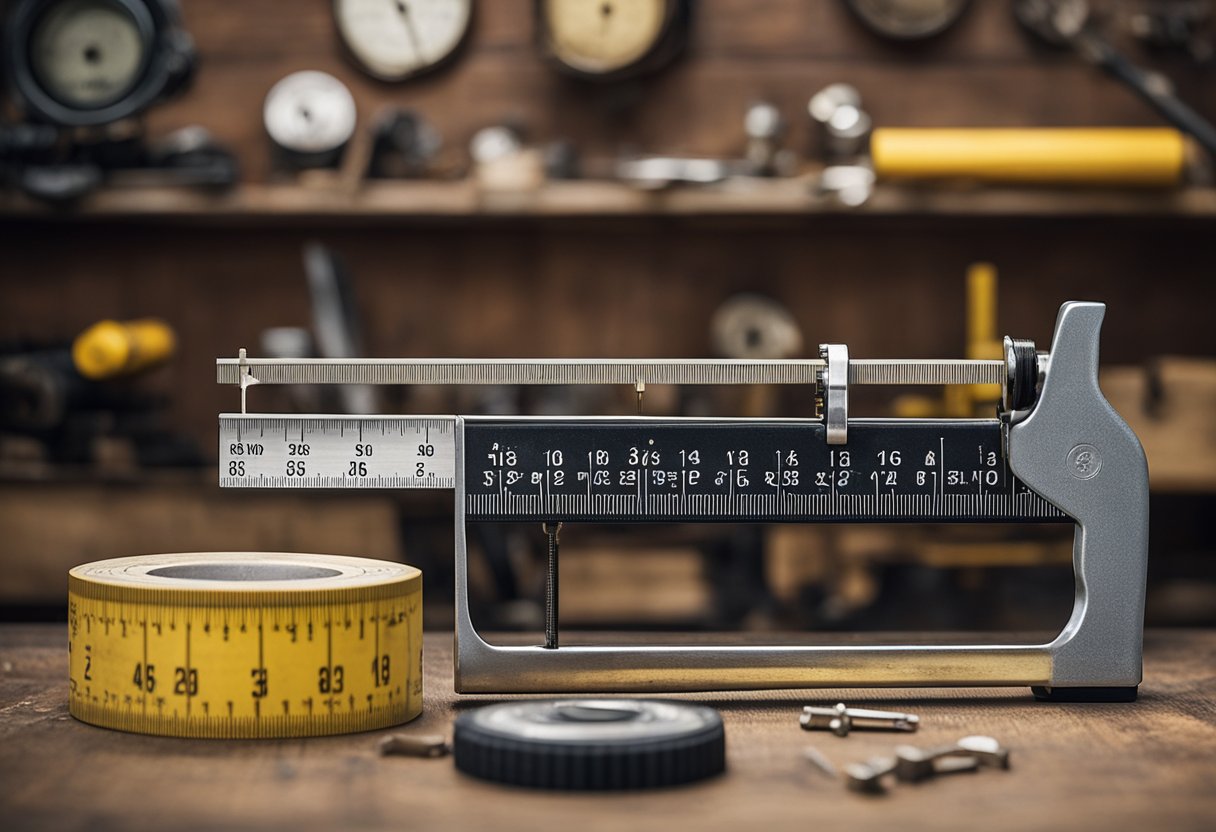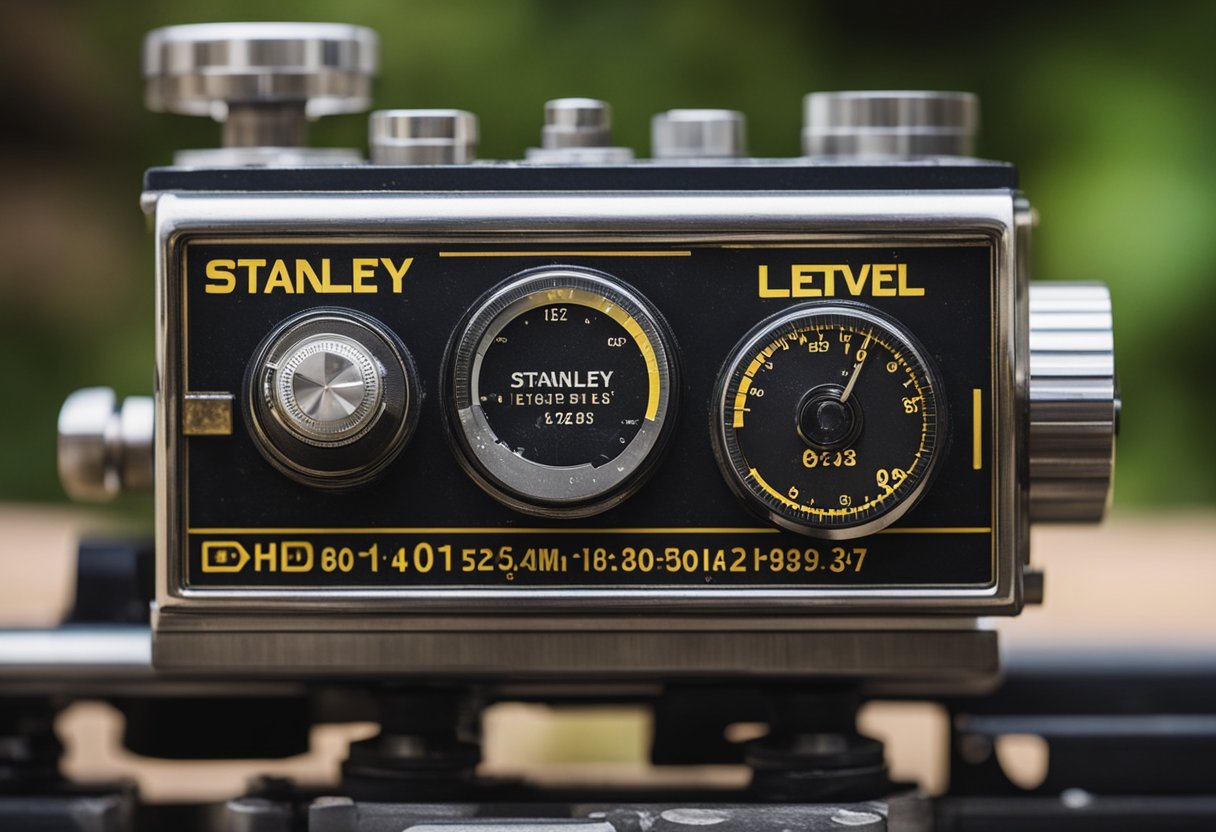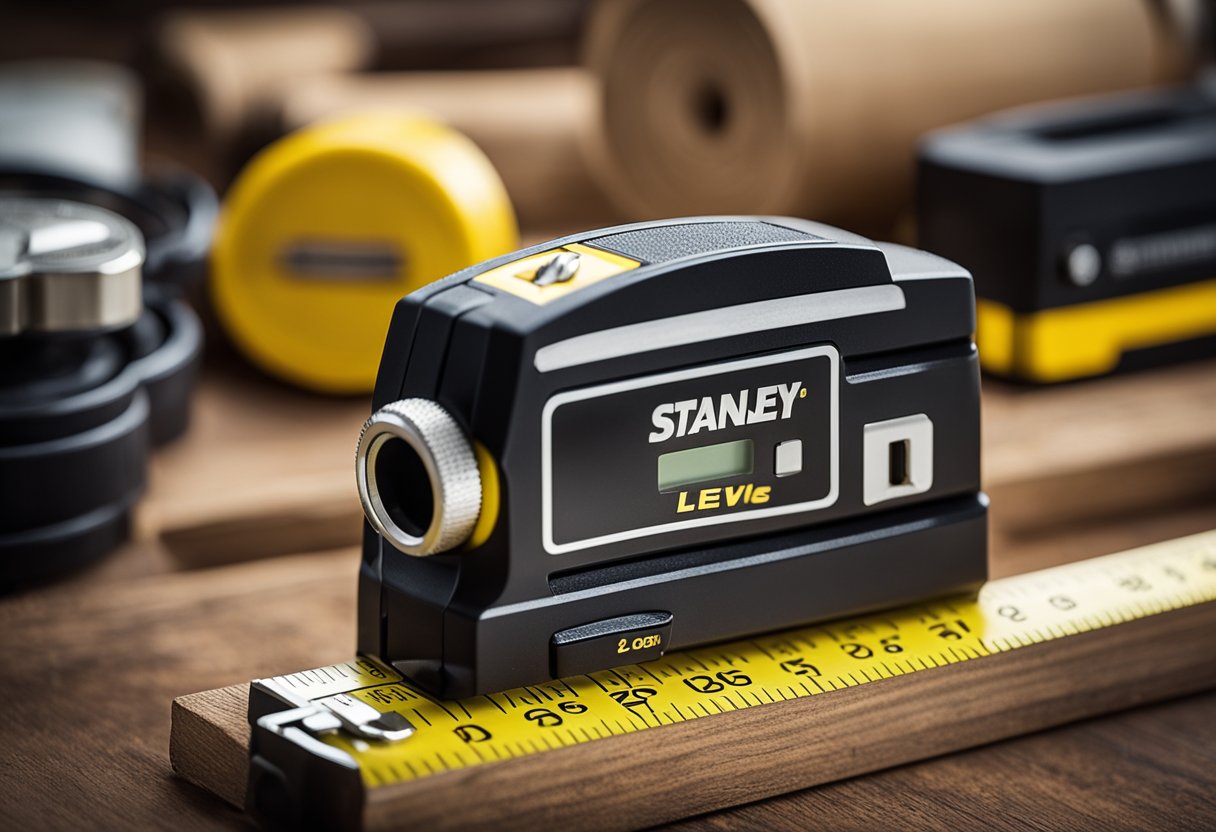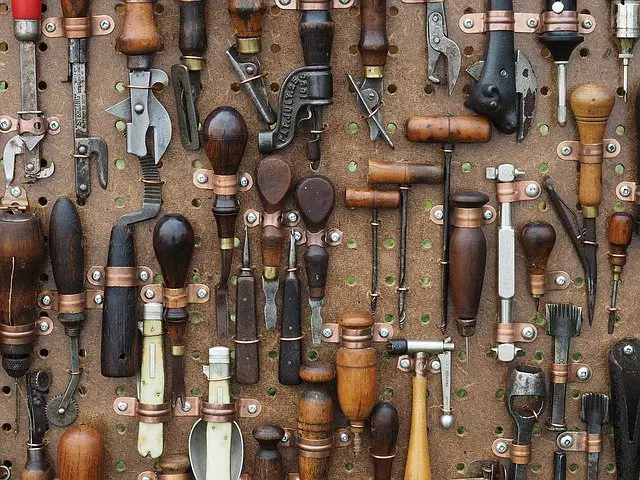As a woodworking enthusiast, I understand the importance of having accurate and reliable tools. One such tool that has stood the test of time is the Stanley level. Stanley levels have been in use for over a century and are still widely used by professionals and hobbyists alike. However, determining the age, condition, and value of a Stanley level can be a challenging task for many. In this article, I will provide a comprehensive guide on how to date a Stanley level, including identifying the level, understanding its construction, evaluating its condition, and estimating its value.
Identifying a Stanley Level can be a daunting task, especially if you are not familiar with the various models and markings. However, with a little bit of knowledge and some patience, you can quickly determine the age and model of your Stanley level. Understanding the construction of a Stanley level is also essential to determine its age and value. Stanley levels have gone through several changes over the years, and knowing these changes can help you determine the age of your level accurately.
Historical Context of Stanley Levels is also an essential aspect that can help you date your Stanley level accurately. Stanley levels have a rich history that dates back to the mid-19th century, and understanding this history can provide valuable insights into the age and value of your level. By examining the various markings, features, and construction of your Stanley level, you can determine its age, condition, and value with confidence.
Key Takeaways
- Identifying a Stanley Level is crucial to determine its age and value accurately.
- Understanding the construction and historical context of Stanley Levels can provide valuable insights into their age and value.
- Evaluating the condition and estimating the value of a Stanley level requires knowledge and patience.
Identifying a Stanley Level
https://www.youtube.com/watch?v=Ab4U4wojz_A&embed=true
As a collector or user of Stanley levels, it is important to know how to identify them. In this section, I will cover the key aspects of identifying a Stanley level, including markings, logo, model, and type study.
Markings and Logo
One of the first things to look for when identifying a Stanley level is the markings and logo. Stanley levels typically have the Stanley logo stamped on the level or on the brass plate. The logo may be accompanied by other markings, such as the model number and patent dates.
Model and Type Study
Another important aspect of identifying a Stanley level is the model and type study. Stanley produced many different models of levels over the years, and each model had its own unique features and characteristics. The type study is a way to categorize these models based on their features and production dates.
To determine the model and type of your Stanley level, you can consult a type study chart or guide. These guides provide detailed information on the different models and their features, as well as production dates and other identifying characteristics.
Overall, identifying a Stanley level requires a keen eye for detail and a good understanding of the different models and their features. By paying attention to the markings, logo, model, and type study, you can accurately identify your Stanley level and learn more about its history and value.
Understanding the Construction
As a woodworking enthusiast, I know how important it is to have a reliable and accurate level. Stanley levels have been a popular choice for professionals and hobbyists alike for over a century. In this section, I will explain the construction of a Stanley level and what materials are used to make it.
Materials Used
Stanley levels are made of high-quality wood and brass. The wooden level is made of hardwood, which is durable and resistant to warping. The brass adjustment nut is used to adjust the level’s accuracy and is made of high-grade brass, ensuring its longevity.
Vials and Measuring
The level’s vials are a crucial component that helps you determine the accuracy of your work. Stanley levels come with two or three vials, depending on the model. The vials are made of glass and contain liquid that is dyed to make it easier to see. The vials are mounted on the level’s wooden body and are held in place by brass clips.
The vials are used to measure both horizontal and vertical planes. The horizontal vial, also known as the bubble level, is used to measure the levelness of a surface. The vertical vial, also known as the plumb level, is used to measure the verticality of a surface.
In conclusion, understanding the construction of a Stanley level is essential to ensure its proper use. The materials used, such as high-quality wood and brass, ensure its durability and longevity. The vials, made of glass and containing dyed liquid, help you measure both horizontal and vertical planes accurately.
Historical Context of Stanley Levels
https://www.youtube.com/watch?v=ahLX6LJs124&embed=true
As a woodworking tool manufacturer, Stanley has a rich history dating back to the mid-1800s. Understanding the historical context of Stanley levels can help in identifying and dating these tools. In this section, I will provide an overview of the history of Stanley levels.
Patents and Trademarks
Stanley levels were patented and trademarked, which can help in identifying and dating them. The first patent for a level was issued in 1852 to Justus A. Traut, who later sold the patent to Leonard Bailey. Bailey then sold the patent to the Stanley Rule and Level Company, which began manufacturing levels under the Bailey patent.
In 1867, the Stanley Rule and Level Company acquired the patent for a level with a curved glass tube, which became known as the “vial” level. The vial level was a significant improvement over previous designs and quickly became popular among woodworkers.
Stanley also trademarked their levels, which can help in identifying and dating them. The most common trademark found on Stanley levels is the “SW” logo, which stands for Stanley Works. Other trademarks used by Stanley include the “V” trademark, which was used from 1912 to 1918, and the “Sweetheart” trademark, which was used from 1920 to 1935.
Manufacturer and Dealer
Stanley levels were manufactured by the Stanley Rule and Level Company, which was founded in 1857 in New Britain, Connecticut. The company was later renamed the Stanley Works and became one of the largest tool manufacturers in the world.
Stanley levels were sold by a variety of dealers, including hardware stores, lumberyards, and tool supply companies. Some dealers also sold their own branded levels, which were often manufactured by Stanley.
In conclusion, understanding the historical context of Stanley levels can help in identifying and dating these tools. Patents and trademarks can provide valuable information, and knowing the manufacturer and dealer can also be helpful.
Determining the Age
As mentioned earlier, Stanley levels were produced for over a century, so determining the age of your level can be challenging. However, there are a few techniques you can use to determine the age of your Stanley level.
Dating Techniques
One of the most reliable ways of dating a Stanley level is by examining its features. Stanley introduced new features and made changes to their levels over time, so by identifying these features, you can determine the age of your level. Some features to look for include the type of vial used, the shape of the level, and the type of screws used.
Another technique is to examine the markings on the level. Stanley often marked their levels with the model number, patent date, and manufacturing location. By identifying these markings, you can determine the age of your level.
Patent Numbers
Stanley levels were often marked with patent numbers, which can be used to determine the age of the level. By looking up the patent number, you can determine the year the patent was issued and use that information to determine the age of your level.
It is important to note that not all Stanley levels were marked with patent numbers, so this technique may not be applicable to all levels.
In conclusion, determining the age of your Stanley level can be challenging, but by examining its features and markings, you can determine its age with reasonable accuracy.
Evaluating the Condition
https://www.youtube.com/watch?v=qvPqBtLkuaQ&embed=true
When it comes to dating a Stanley level, evaluating its condition is a crucial first step. Here are some key factors to consider:
Assessing Rust and Damage
Before you can accurately date a Stanley level, you need to assess its condition. One of the most common issues with older levels is rust. Rust can be a sign of age, but it can also indicate damage or neglect. If the rust is extensive, it may be difficult to date the level accurately. However, if the rust is minimal, you may be able to get a good idea of the level’s age by examining the markings and features.
In addition to rust, you should also look for other signs of damage, such as cracks, chips, or missing pieces. These issues can affect the level’s accuracy and make it more difficult to use. If the damage is significant, it may be best to avoid purchasing the level altogether.
Checking Accuracy
Accuracy is another important factor to consider when evaluating the condition of a Stanley level. Even if the level is in good condition, if it is not accurate, it will not be useful for measuring. To check the accuracy of a level, you can use a calibration tool or compare it to a known accurate level.
One way to check accuracy is to place the level on a flat surface and see if the bubble is centered. If the bubble is not centered, the level is not accurate. Another way to check accuracy is to use the level to measure a known flat surface, such as a countertop or table. If the level indicates that the surface is not level, it is not accurate.
By assessing the level’s condition and accuracy, you can get a better idea of its age and usefulness. With this information, you can make a more informed decision about whether to purchase the level and how to use it effectively.
Estimating the Value
https://www.youtube.com/watch?v=vTHbzHtrB8o&embed=true
As a tool collector or enthusiast, you may be interested in estimating the value of your Stanley level. The value of antique and vintage Stanley levels can vary depending on several factors, including age, condition, rarity, and demand. In this section, I will provide some guidance on how to estimate the value of your Stanley level.
Antique and Vintage Value
Antique and vintage Stanley levels can be valuable collector’s items. The value of an antique Stanley level can range from a few dollars to several hundred dollars or more, depending on its age, rarity, and condition. According to Tools Advisor, the value of an antique Stanley level can be estimated by considering the following factors:
- Age: The age of the level can be determined by checking the patent dates stamped on it. The older the level, the more valuable it may be.
- Rarity: Some Stanley levels are rarer than others, and thus more valuable. For example, the Stanley No. 1 level is one of the rarest and most valuable Stanley levels.
- Condition: The condition of the level also affects its value. Levels in good condition, with minimal wear and tear, are generally more valuable than those in poor condition.
Marketplace Considerations
When estimating the value of your Stanley level, it is also important to consider the marketplace. According to LumberJocks Woodworking Forum, the value of a Stanley level can vary depending on the following marketplace factors:
- Demand: The demand for a particular Stanley level can affect its value. Levels that are in high demand among collectors may be more valuable than those that are not.
- Location: The location of the marketplace can also affect the value of a Stanley level. For example, levels that are rare in one region may be common in another, and thus less valuable.
- Seller: The seller of the Stanley level can also affect its value. Levels sold by reputable dealers or collectors may be more valuable than those sold by unknown or untrustworthy sources.
By considering these factors, you can estimate the value of your Stanley level. However, keep in mind that the value of any antique or vintage tool is ultimately subjective and can vary depending on the buyer and seller.
Usage and Maintenance
Carpentry and Woodworking
As a carpentry and woodworking tool, the Stanley level is an essential tool for ensuring that your work is level and straight. The level is used to check the levelness of a surface, such as a floor or a countertop, and to ensure that the surface is flat and even. When using the Stanley level for carpentry and woodworking, it is important to keep a few things in mind.
First, make sure that the tool is properly calibrated and adjusted before use. This can be done by checking the bubble level and adjusting the screws on the level as needed. Second, make sure that the tool is being used on a stable surface. If the surface is not stable, the level may not give accurate readings. Finally, make sure that the level is being used correctly. The level should be held firmly against the surface being checked, and the bubble should be centered between the two lines on the level.
Handling and Care
As with any hand tool, proper handling and care are essential to ensure that the Stanley level lasts for many years. To ensure the longevity of your level, it is important to follow a few simple guidelines.
First, make sure that the handle of the level is clean and dry before use. This will help prevent slipping and ensure that the level is held securely. Second, make sure that the level is stored in a dry, cool place when not in use. This will help prevent rust and other damage to the tool. Third, make sure that the level is cleaned and oiled regularly to prevent rust and other damage. Finally, make sure that the level is not dropped or mishandled, as this can cause damage to the tool.
Frequently Asked Questions
What are the identifying features of a vintage Stanley level?
Vintage Stanley levels may have different identifying features depending on the model and year of manufacture. However, some common features of vintage Stanley levels include brass hardware, rosewood inserts, and a distinctive Stanley logo. Some models also have a patent date stamped on the level. If you are unsure about the identifying features of your vintage Stanley level, you can consult a tool expert or refer to online resources such as LumberJocks Woodworking Forum or Top Chooser.
What are the different types of Stanley level sights and how do they work?
Stanley levels have several types of sights, including plumb, level, and cross-line sights. Plumb sights are used to determine vertical alignment, while level sights are used to determine horizontal alignment. Cross-line sights are used to determine both vertical and horizontal alignment simultaneously. These sights work by using a bubble vial and a reference line to indicate the position of the level.
What is the value of an old Stanley level?
The value of an old Stanley level depends on several factors, including the model, year of manufacture, condition, and rarity. Some vintage Stanley levels are highly sought after by collectors and can fetch high prices at auctions or online marketplaces. However, the value of a vintage Stanley level may also depend on the demand in the market and the availability of similar models.
Are Stanley cast iron levels more accurate than other types of levels?
Stanley cast iron levels are known for their durability and accuracy. However, the accuracy of a level depends on several factors, including the quality of the manufacturing process, the materials used, and the calibration of the level. Therefore, it is important to choose a level that meets your specific needs and requirements.
How can I determine the age of my Stanley level?
You can determine the age of your Stanley level by examining the identifying features such as the logo, patent date, and hardware. You can also consult online resources such as Tools Advisor or WoodenBoat Forum for more information. Additionally, you can consult a tool expert or appraiser to help you determine the age and value of your Stanley level.
What is the history of Stanley tools and how does it relate to their levels?
Stanley Tools has a rich history that dates back to the mid-1800s. The company was founded by Frederick Stanley in New Britain, Connecticut, and has since become a leading manufacturer of hand tools and power tools. Stanley levels have been a staple of the company’s product line for many years and are known for their quality and durability. Today, Stanley Tools continues to innovate and produce high-quality tools for professionals and DIY enthusiasts alike.

Hi, I’m Sal Muller of Tooltrip.com. My DIY experience led me to understand essential power tools for home projects. Tooltrip.com guides enthusiasts and professionals in choosing right tools for any job. I provide concise top tool reviews for easier, efficient DIY.

